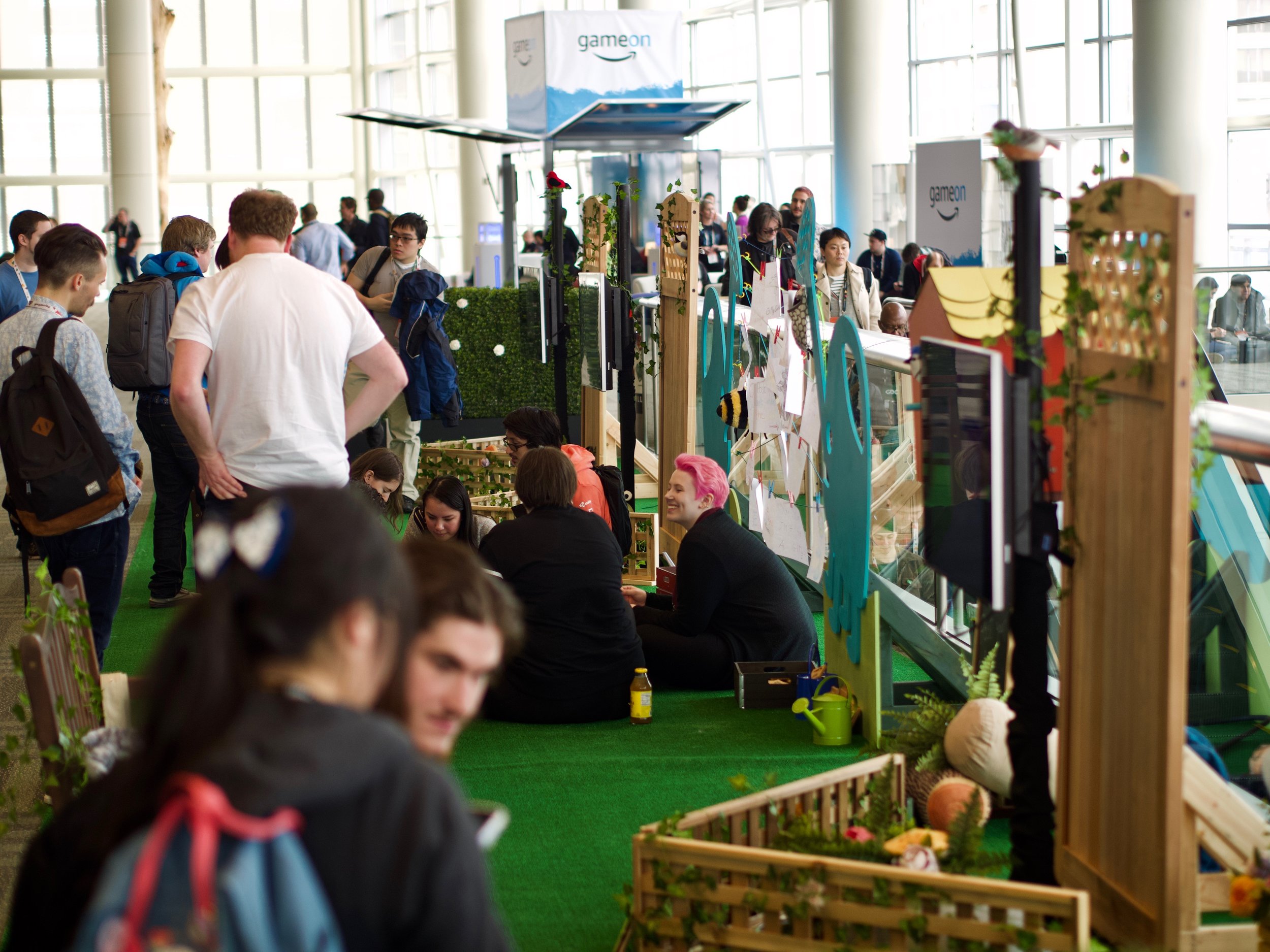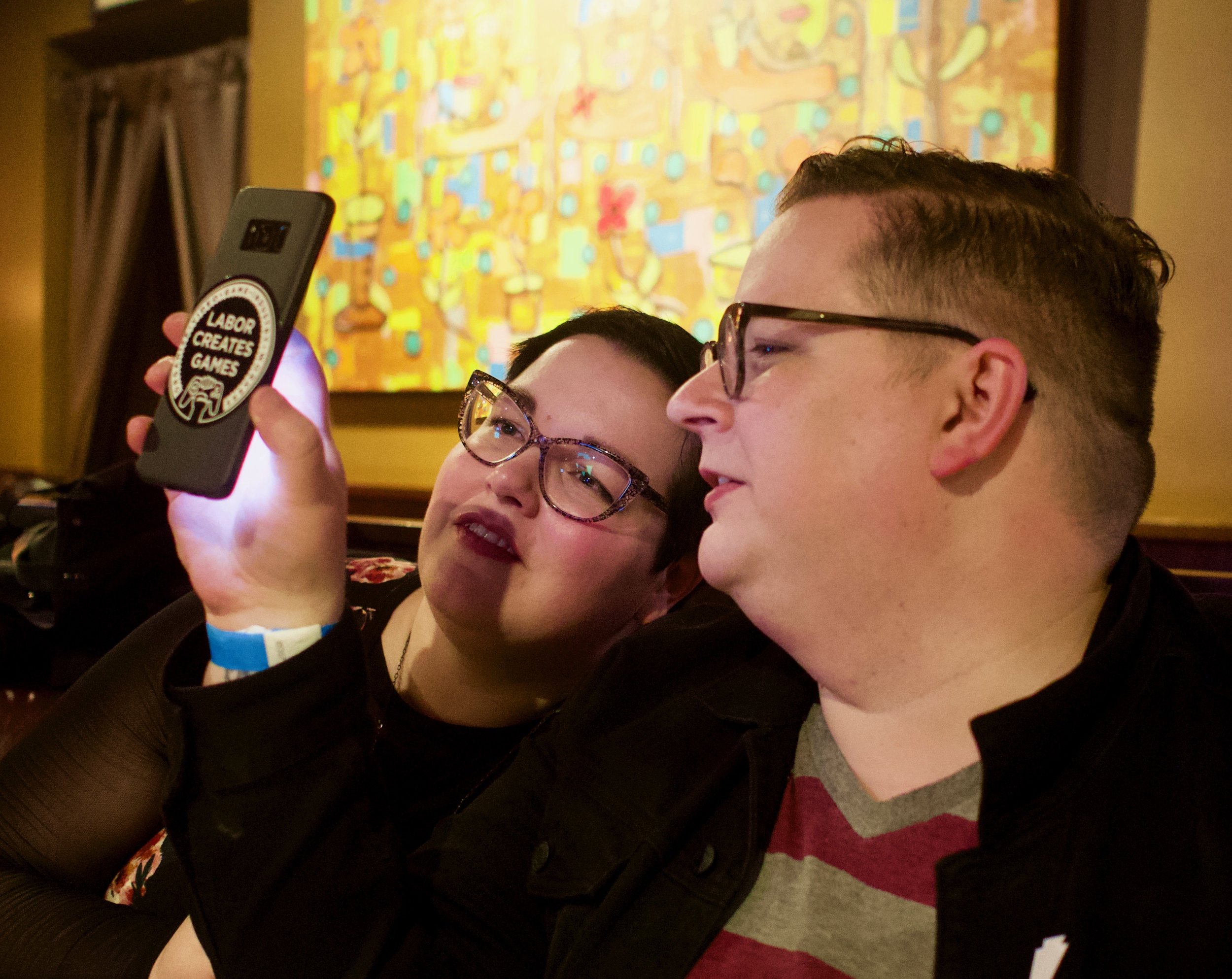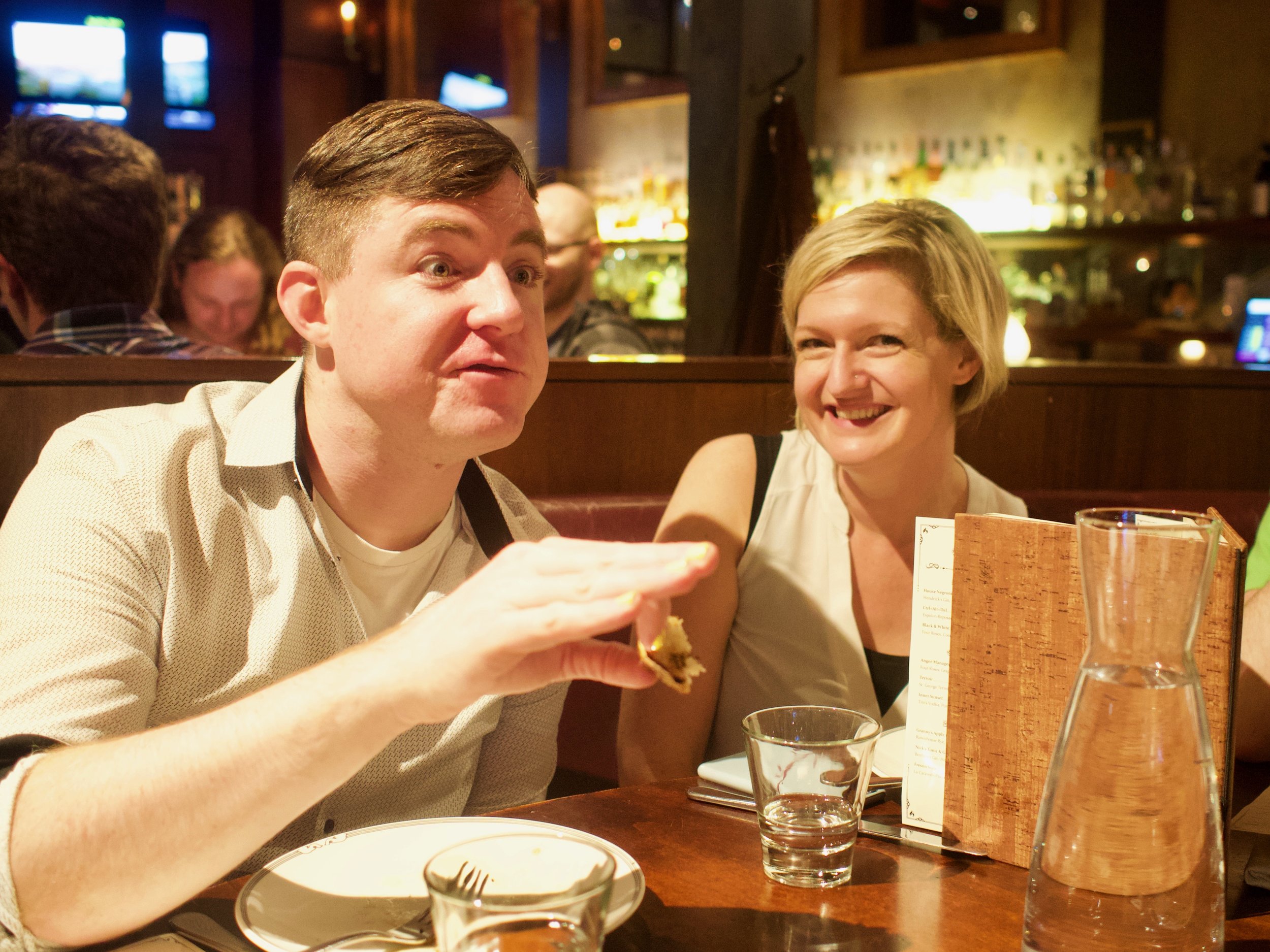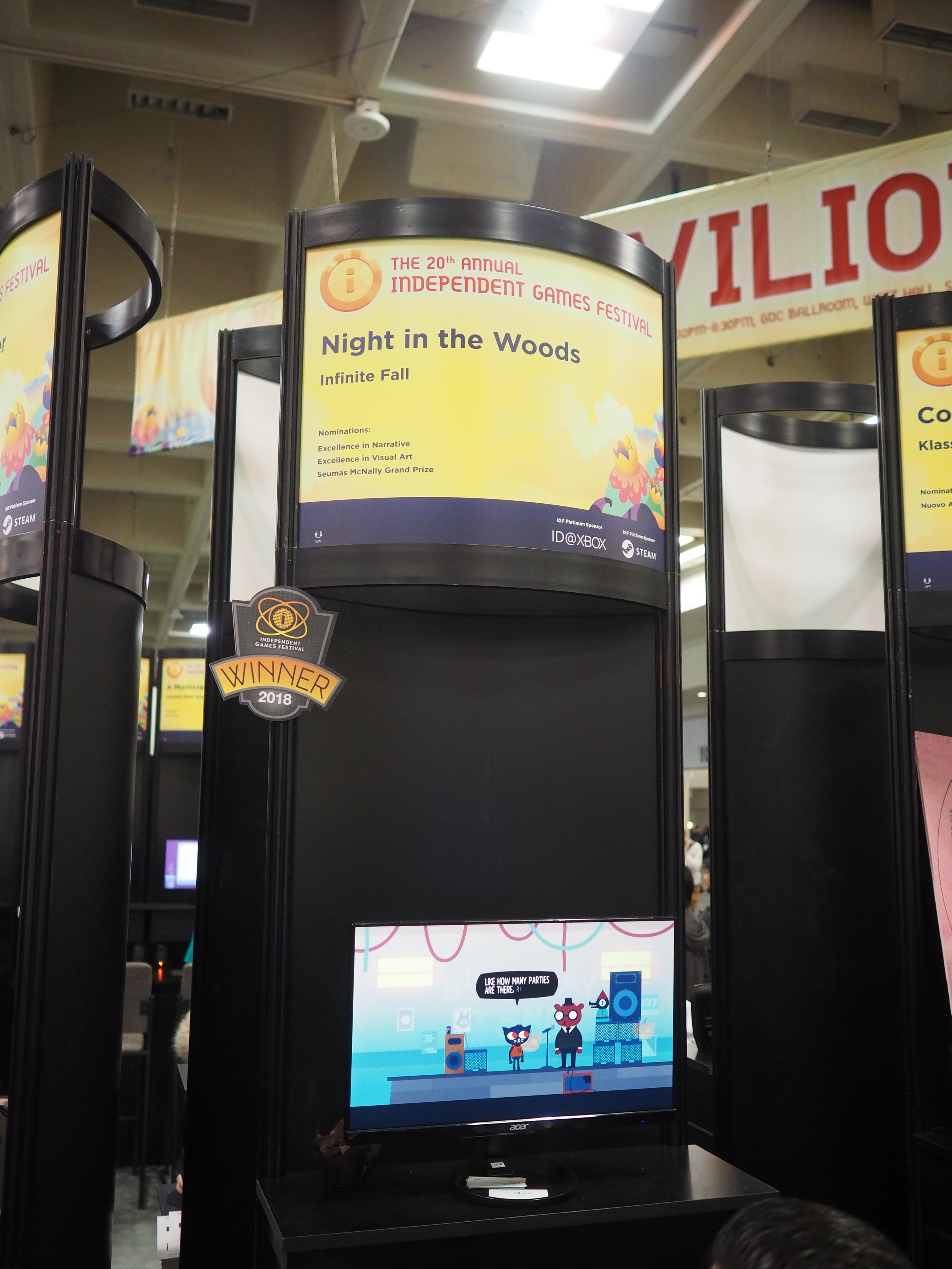By Jon Manning (@desplesda), co-founder of Secret Lab.
So, I’m back from GDC 2018.
We’ve been going to GDC for 9 years now. If we go next year, I’ll have been wandering in and out of the Moscone Centre for a decade.
We started going to GDC because we were living in California, and happened to have the spare resources and time to attend it. We were always attending from the viewpoint that it would be useful to have an idea of what the game dev community is like, and to try to do the thing that business types call “networking” and regular humans call “making friends”. We didn’t realise they were the same thing until our fifth year of going.
Like many attendees at GDC, we were going aspirationally. While we’ve always been game developers—our first ever release was a tiny little competitive puzzler called Culture, in 2008—we never felt like we were part of the larger conversation, and I’m pretty sure that that feeling I shared with most people I see who aren’t frequently seen in groups in the halls.
I don’t have any advice here for people who want to change that for themselves. All I have is that, around the time we started working on Night in the Woods, I had a group of friends who all work in the same field and never see each other except at international gatherings like GDC. While not all of these people are team members on the game we worked on, having a thing that serves as the anchor for a group that we’re part of made my experience significantly less lonely, and a lot more focused.





This is the second GDC that I’ve given a talk at. This year, I talked about Grabthar’s Hammer, the compression technique that we built for the iOS version of Night in the Woods. People liked the talk! I had a number of people with questions afterwards, and I think I answered them pretty well. They’ll have ended up on the recording. I’ll probably end up cringing hugely when I review the video. Worth it.
This is the first GDC in which a game we worked on was up for awards at either the Independent Games Festival or the Game Developers Choice Awards. Night in the Woods was up for three awards in each. People like the game, I think. That’s nice.
Night in the Woods won two awards, both of them in the Independent Games Festival. We won Excellence in Narrative, and the Seumas McNally Grand Prize, and it felt weird and good to be at the table and hear it. For each of the awards that we were nominated for, I’d picked out a game that wasn’t ours that we were rooting for, and at the moment of the announcement, I was crossing my fingers for them. For the awards that we didn’t win, my picks won about half the time; for the times we did win, it was a huge surprise. I think I remember loudly shouting “what the fuck” when the announcement for the Grand Prize was made.
We’d already met before the event, and talked about what our plans were if we won. We didn’t want to bore the audience with everyone having a chance to talk, so we decided to limit who was going to talk; Scott, as the primary face of the game, would speak, and if we won the grand prize, we’d take advantage of the fact that it was the end of the event to get others to say a few words.
I don’t remember much about the journey up to the stage. I do remember focusing on the fact that I was potentially on camera, so I had to maintain my stage face. I do remember noticing, for the first time, that you can’t hear what the person at the microphone is saying. I had to wait until I was back home and could watch the recording to hear what Scott, Alec, Bethany and Bekah had said.
After you’re done giving whatever remarks you have, you’re taken off stage, and led into an area with cameras and people who want to take pictures. I don’t remember much about this either, but I do remember being formed into a line and having pictures taken. There are selfies on my phone with Adam and Bekah that I only fuzzily remember.
We ended up leaving the awards shortly after the final award we were nominated for was announced. We walked down to Zero Zero, and ordered pizza. Adam proposed a toast. It was the same toast he’d given last year, less than a week after the game’s launch: “It shouldn’t have worked.”
People usually warn against putting people on pedestals. Having attended GDC and other community events as a face in the crowd, it’s hard to avoid doing that. This is the GDC in which a lot of my heroes came down off the pedestals, and I ended up just hanging out with them and making friends. I left GDC more emotionally fulfilled than when I came in. The indie games scene (which is a very specific thing, and is not the only group of people independently producing games) relies very much on personal networks of friends, and until you have that relationship, it can feel quite isolating.
We need to get back to work on Night in the Woods now! More from us soon...










